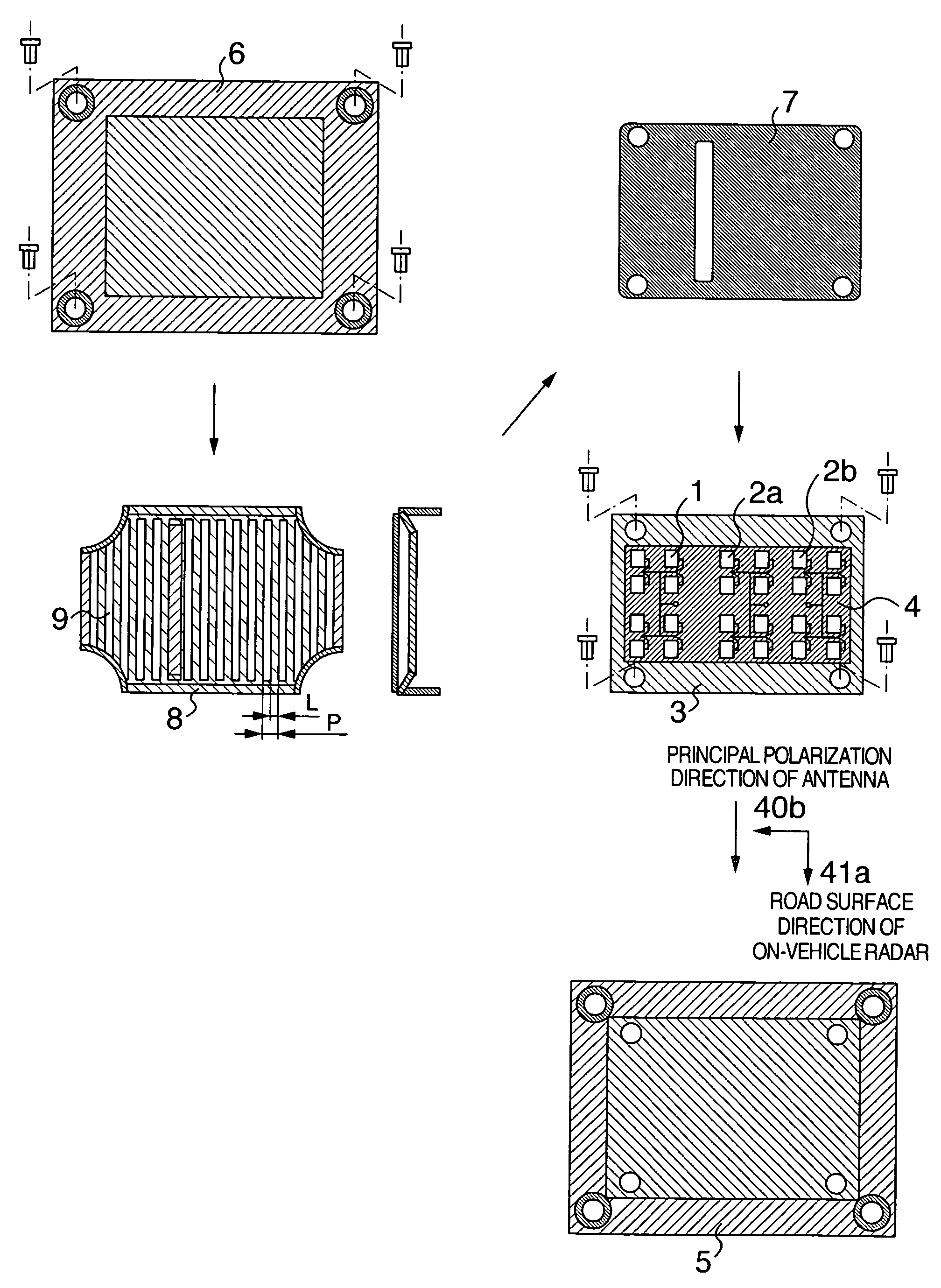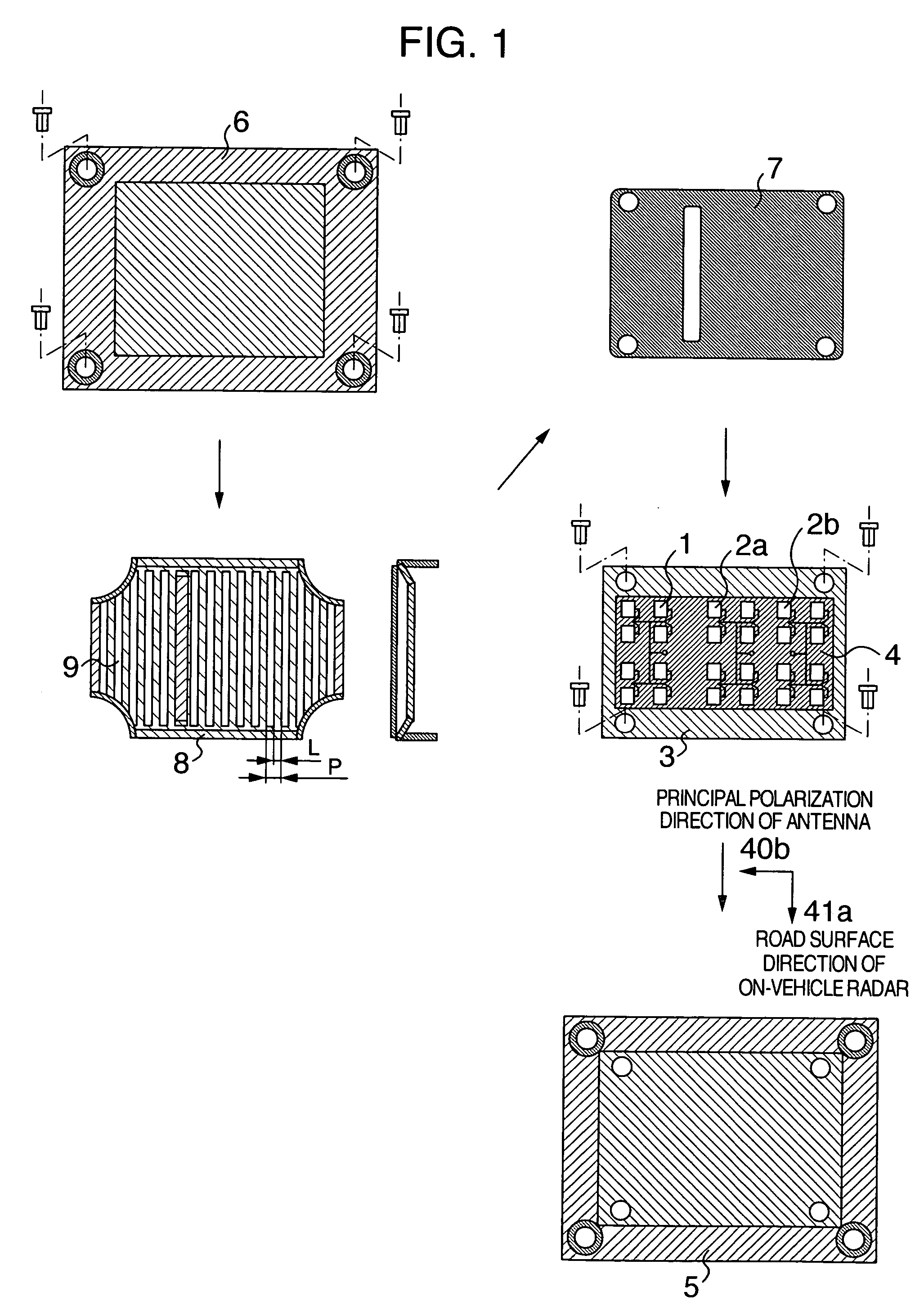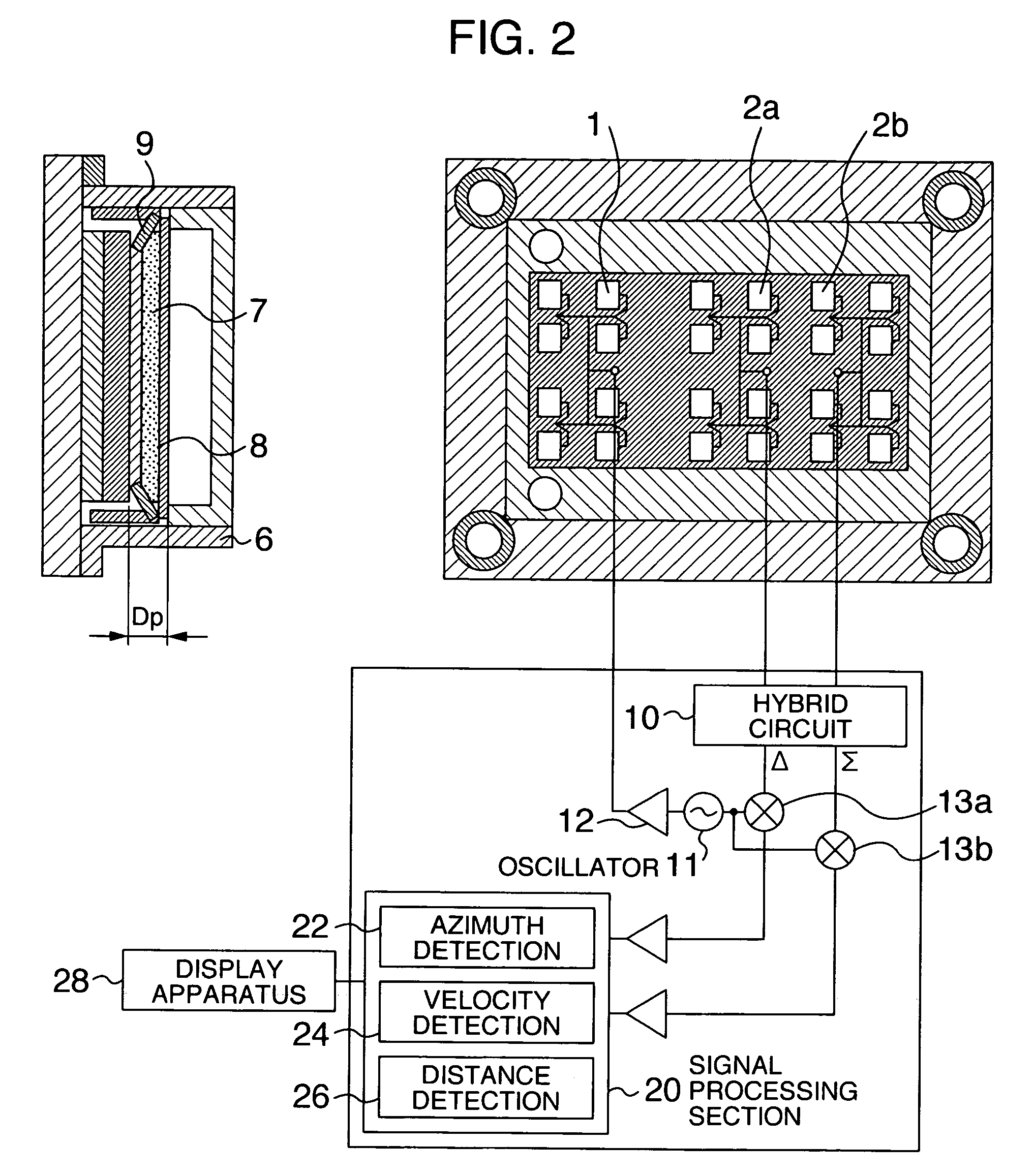On-vehicle radar
a technology for vehicles and radars, applied in the field of on-vehicle radars, can solve the problems of deterioration, a large amount of relative velocity, and a large amount of noise received by clutter noise, so as to reduce side lobes, prevent road clutter, and reduce resonance of a slit
- Summary
- Abstract
- Description
- Claims
- Application Information
AI Technical Summary
Benefits of technology
Problems solved by technology
Method used
Image
Examples
embodiment 1
[0047]FIG. 1 is a configuration diagram showing a first embodiment of an on-vehicle radar according to the present invention. An arrow 41a indicates the direction of a road surface when the on-vehicle radar is attached to a vehicle.
[0048] In this embodiment, a transmission signal is transmitted from a transmission patch antenna 1, a signal reflected by a target is received by a reception patch antenna 2a and a reception patch antenna 2b and the velocity, distance and azimuth of the target are detected from these reception signals. The transmission patch antenna 1 and reception patch antennas 2a, 2b formed on a dielectric substrate 4 are arranged on an antenna plate 3 made of metal, the antenna plate 3 is attached to a radar housing 5 and covered with a dielectric radome 6. A slit plate 8 provided on the antenna front face with a foamed sheet 7 interposed in between is made of metal which is sufficiently thin with respect to the wavelength and constructed of slits having a width L s...
embodiment 2
[0065]FIG. 4 is a configuration diagram showing a second embodiment of the on-vehicle radar according to the present invention. This embodiment consists of the slit plate 8 outserted with respect to the foamed sheet 7 instead of the slit plate 8 and foamed sheet 7 according to the first embodiment. In this case, too, pressurizing and fixing the slit plate 8 to the antenna surface using the radome 6 placed at a position facing the antenna surface makes it possible to reduce resonance of the slits 9, suppress noise and thereby obtain excellent detection performance.
embodiment 3
[0066]FIG. 5 shows a spacer 14 made of dielectric, metal or radio absorber, instead of the foamed sheet 7 of Embodiment 1, placed between the antenna and slit plate 8 except the planes of projection of the patches in the direction of the normal to the plane of the antenna patch.
[0067] In this case, since this structure reduces resonance of the slit 9, suppresses noise and constitutes all the antenna patch sections with air, it reduces power loss of the antenna and it is particularly excellent.
[0068] Furthermore, by setting this thickness to a ⅛ effective wavelength to ½ effective wavelength, it is possible to control the distance between the slit plate 8 and antenna and suppress noise and thereby obtain excellent detection performance.
[0069] Furthermore, by pressurizing and fixing the slit plate 8 to the antenna surface using the radome 6 placed at a position of the slit plate 8 facing the antenna surface, it is possible to reduce resonance of the slits 9, suppress noise and ther...
PUM
 Login to View More
Login to View More Abstract
Description
Claims
Application Information
 Login to View More
Login to View More - R&D
- Intellectual Property
- Life Sciences
- Materials
- Tech Scout
- Unparalleled Data Quality
- Higher Quality Content
- 60% Fewer Hallucinations
Browse by: Latest US Patents, China's latest patents, Technical Efficacy Thesaurus, Application Domain, Technology Topic, Popular Technical Reports.
© 2025 PatSnap. All rights reserved.Legal|Privacy policy|Modern Slavery Act Transparency Statement|Sitemap|About US| Contact US: help@patsnap.com



